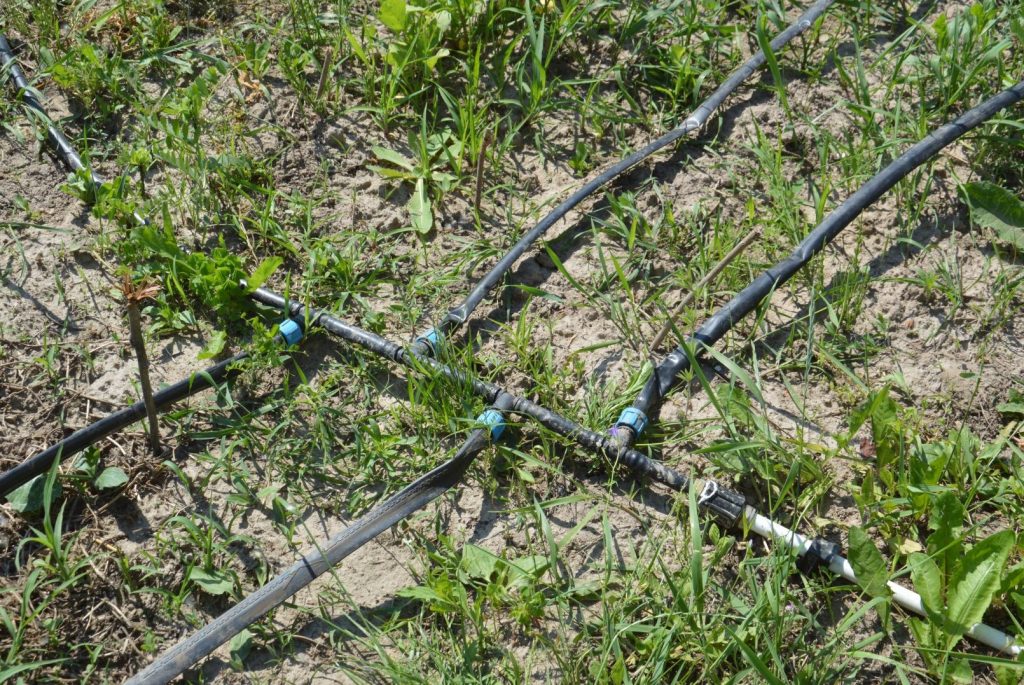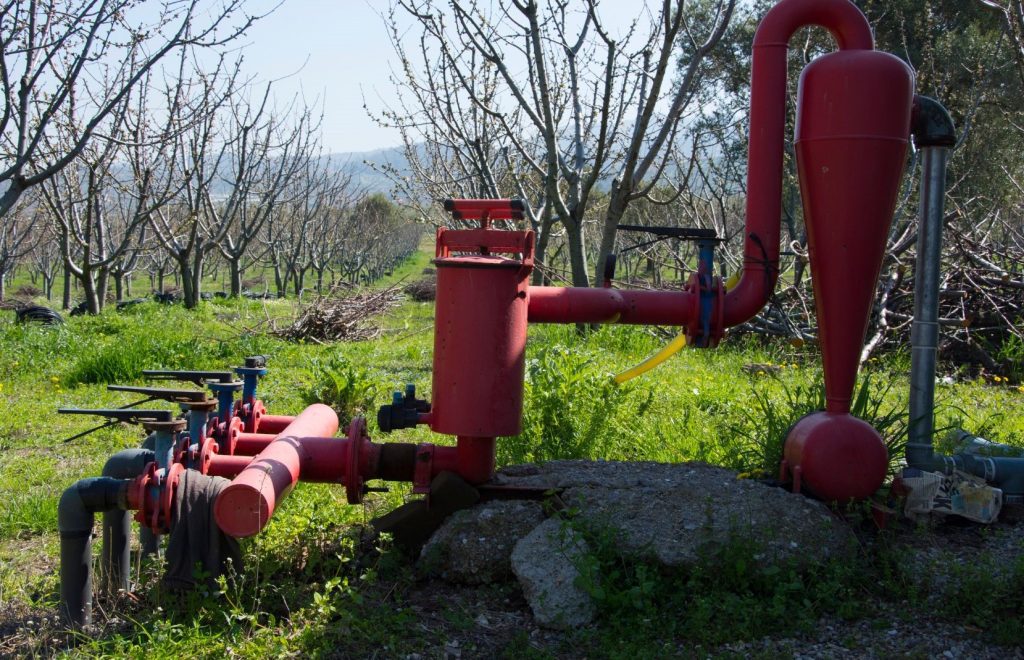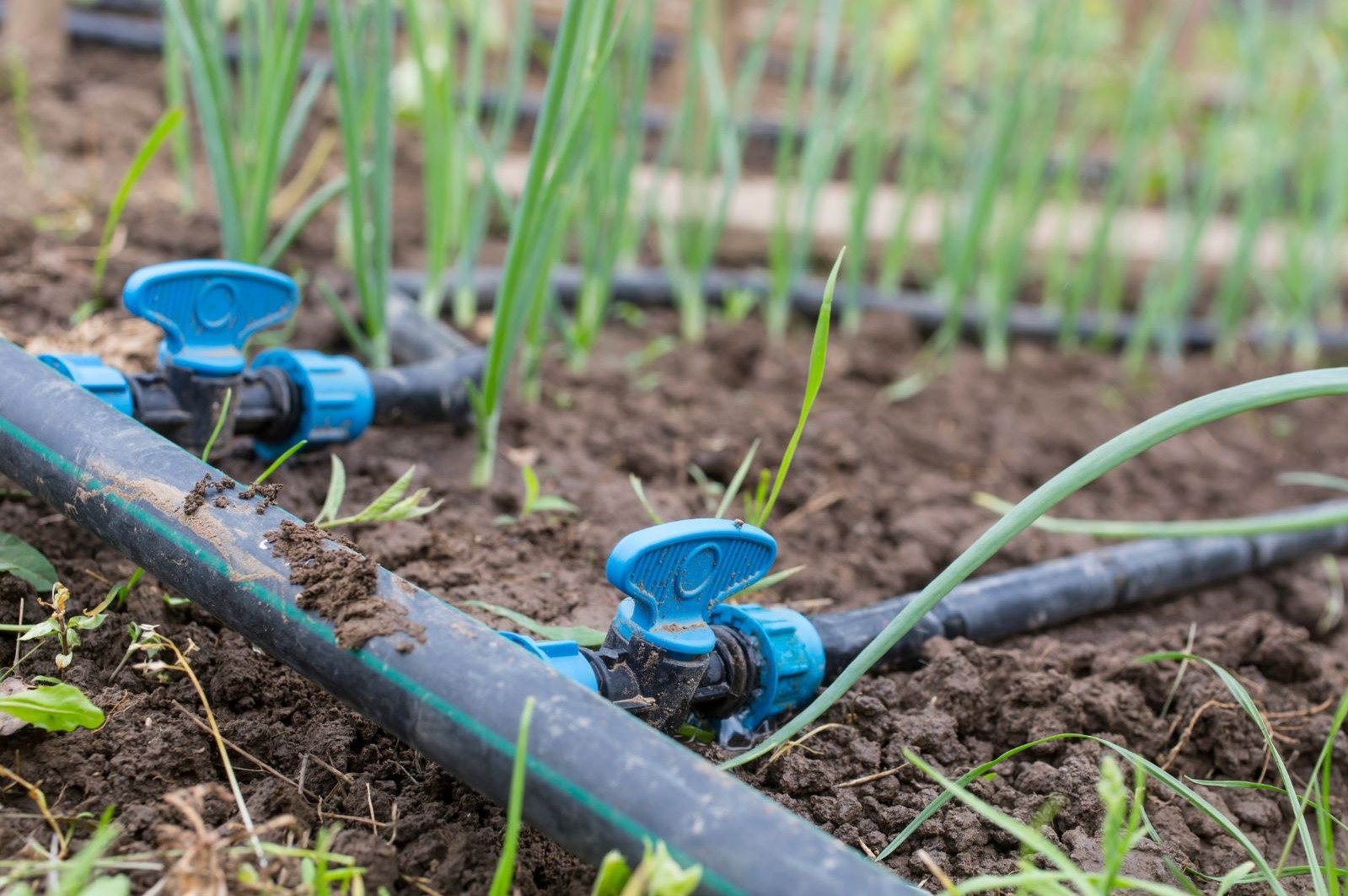Components and Types of Drip Irrigation Systems
Drip irrigation is a type of micro-irrigation system in which water tickles directly to the plant’s roots through a network of pipes and emitters. Compared to other irrigation methods, drip irrigation is highly efficient if properly designed, installed, operated, and maintained/managed.
The Evolution of Drip Irrigation
Ancient Chinese farmers utilized a primitive drip irrigation system by using buried, unglazed clay pots filled with water. Modern drip irrigation started becoming a concept in 1860 in Germany when researchers began experimenting with subsurface irrigation. Perforated pipe systems were included in the research in the 1920s. The use of plastic to better hold and distribute water was later developed in Australia, while the plastic emitter in drip irrigation was developed in Israel in 1964. By the 2010s, drip irrigation had become the most efficient means of applying water to crops, and it is still becoming increasingly popular.

Components of a Drip Irrigation System
Drip irrigation systems consist of various components channeling water from its source: pump or pressurized water source, water filters, backwash controller, pressure control valve, distribution lines, meters, hand-operated or electronic control block valves, tubes, fittings, and accessories, emitting devices, and chemical injectors. Most large drip irrigation systems include some type of filter to prevent clogging. Without effective filtration, the equipment can be clogged or bio-clogged.
- Water Source: Irrigation water can come from a well, cistern, city council supply, or any other source that provides enough water.
- Pump or Pressurized Water Source: The water source should have enough pressure to move water throughout the irrigation system and ensure good water distribution. The pressure can be maintained by installing raised tanks to utilize gravity or pumps depending on farm size. Pumps can be centrifugal, submersible, or turbine, depending on the water source and the pressure requirement. It is important to note that pumps require electricity, generators, or solar power.
- Filters: Prevent particles from clogging the system. The filter should be accessible for easy cleaning. The main types of filters are disc filters, screen filters, and gravel filters.
- Backwash Controllers: These devices prevent water from flowing back to the water supply system. A plumbing professional must install these to avoid contamination of the water source.
- Pressure Control Valves: These maintain the water pressure in the water supply line to ensure correct operating pressure for the drip emitters at all times. This ensures that the emitters work correctly, last longer, and avoid over-watering or under-watering of crops.
- Tubing: This consists of plastic pipes which carry water from the source to the crops. They can be HDPE/PVC or polyethylene, available in different diameters, lengths, and colors. Black tubing is ideal for outdoor use as it resists degradation from UV light. Tubing runs from the main line to the sub-main and then to the laterals.
- Fittings and Accessories: Consists of connecting pieces between tubings and emitters/drippers. They are selected based on the size and type of tube and emitters/drippers being used. Fittings include but are not limited to elbows, couplers, tees, end caps, and valves.
- Emitters or Drippers: These are the main component of a drip irrigation system. The emitters/drippers sit on the lateral lines with a spacing determined by the crop type being grown and sizes determined by crop water requirement. It is through the emitters/drippers that water is discharged to the crops. The emitters/drippers can either be pressure compensating or non-pressure compensating.
- Chemical Injectors: These are sub-systems set to deliver nutrients into the irrigation system in specific quantities and time intervals. Some examples include electric dosing pump, piston motor injector, and venturi injector.
- Meter: This device is installed on an irrigation system to measure the volume of water supplied to a farm.
- Timer: Controls the frequency and duration of watering by being programmed to turn the irrigation system on and off at specific intervals, reducing watering during cooler weather and increasing watering frequency during hot/dry seasons.

Types of Drip Irrigation Systems
All types of drip irrigation systems are designed to save water and maximize efficiency, and reduce environmental impact while increasing crop yields. Drip irrigation systems are classified into four different types.
Surface drip irrigation
Surface drip irrigation involves laying out pipes or tubing on the soil surface and using drip emitters or drippers to release water onto the soil. This type of system is best suited for row crops and orchards.
Advantages
- It saves water: water is applied directly to plants, reducing wastage from evaporation and runoff.
- Soil erosion is minimized, as the water is not sprayed onto the soil surface.
- It has low energy requirements, as it is gravity-fed.
Disadvantages
- Requires the laying of tubing or pipes on the soil surface, which can be prone to damage.
- It can be affected by wind, which can alter the direction of water flow.
- It can favor weed growth between crop rows.
Subsurface drip irrigation
Subsurface drip irrigation involves laying pipes or tubing below the soil surface, with drip emitters or drippers releasing water into the soil. This type of system is best suited for row crops and orchards.
Advantages
- Reduces water waste, as water is delivered directly to plant roots.
- Soil erosion is minimized.
- It can reduce weed growth between crop rows.
Disadvantages
- Requires special equipment for installation, which increases the cost of installation.
- Root intrusion can occur, leading to damage to the system.
- Requires periodic maintenance to ensure that the system remains unclogged.
Inline drip irrigation
Inline drip irrigation involves having drip emitters or drippers incorporated into tubing or pipes, which release water directly onto plants. This type of system is best suited for gardens and landscapes.
Advantages
- Easy to install and use.
- Reduces water waste, as water is delivered directly to plant roots.
- It can be easily adjusted to meet the specific needs of individual plants.
Disadvantages
- It can be clogged by particulate matter in the water.
- Requires periodic maintenance to ensure that the system remains unclogged.
- It can be more expensive than traditional irrigation methods.
Micro sprinkler irrigation
Micro sprinkler irrigation involves having tiny sprinklers attached to tubing or pipes, which release water as a fine mist or spray. This type of system is best suited for vegetable gardens and small orchards.
Advantages
- Provides good coverage for small areas.
- It can help to cool down plants in hot weather.
- It can be easily adjusted to meet the specific needs of individual plants.
Disadvantages
- It can lead to greater water loss due to evaporation.
- Requires regular cleaning and maintenance to prevent clogging.
- More expensive than traditional irrigation methods.
End Notes
Drip irrigation offers many advantages. Fertilizer and nutrient loss are minimized, and water application efficiency is high if managed correctly. Field leveling is not necessary, so fields with irregular shapes can be accommodated easily. Recycled non-potable water can be safely used, and soil erosion and weed growth are lessened. Water distribution is highly uniform, with a controlled output of each nozzle, and labor costs are lower than other irrigation methods. This system allows the use of fertigation, saving fertilizers while the foliage remains dry, reducing the risk of disease. Drip irrigation is also usually operated at a lower pressure than other types of pressurized irrigation, thus reducing energy costs.
However, drip irrigation also has disadvantages. Initial costs can be higher than overhead systems. The sun can affect the tubes, shortening their lifespan, while at the same time, there are risks of plastic degradation in the soil and food crops. Without proper filtration and maintenance, clogging or bio-clogging can occur. Also, the farmer cannot see the water that is applied, leading to insufficient water being applied, which can be common for those with less experience with drip irrigation. Waste of water, time, and harvest is also possible if the system is poorly managed.
Further reading
Factors to Consider When Selecting an Irrigation System
Types of Irrigation Systems – Which to choose depending on your needs
References
- https://onlinelibrary.wiley.com/doi/abs/10.1111/j.1752-1688.1997.tb04088.x
- https://elibrary.asabe.org/abstract.asp?aid=17309
- https://www.thepharmajournal.com/archives/2018/vol7issue1/PartF/7-1-67-115.pdf
- https://www.mdpi.com/2077-0472/12/2/202
- https://www.sciencedirect.com/science/article/abs/pii/S0378377417300896
- https://www.sciencedirect.com/science/article/abs/pii/S0378377417300896
- https://www.sciencedirect.com/science/article/abs/pii/S037837741930945X
- https://www.sciencedirect.com/science/article/abs/pii/S0045790617303142
- https://www.sciencedirect.com/science/article/abs/pii/S0378377408000553
- https://www.sciencedirect.com/science/article/abs/pii/S0304423800002454









































































